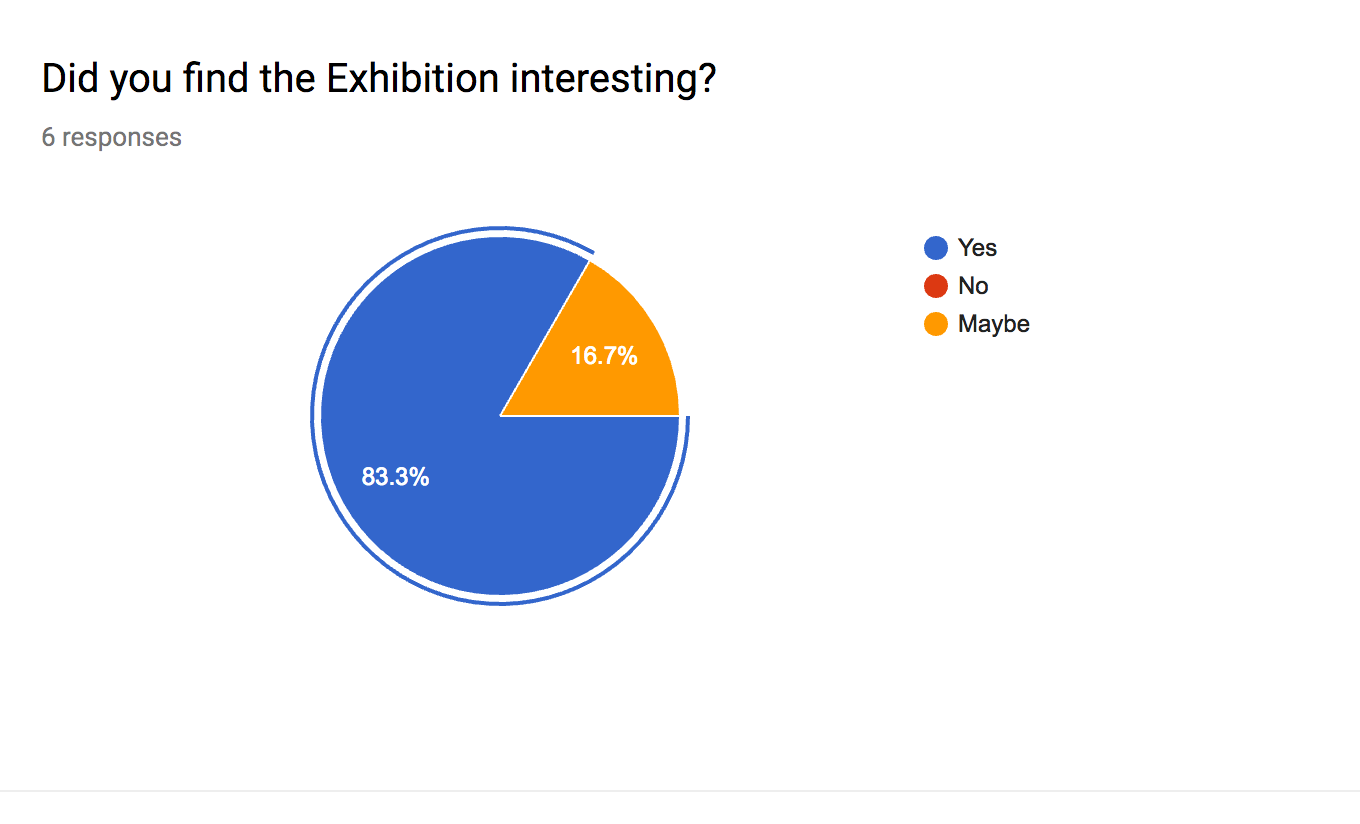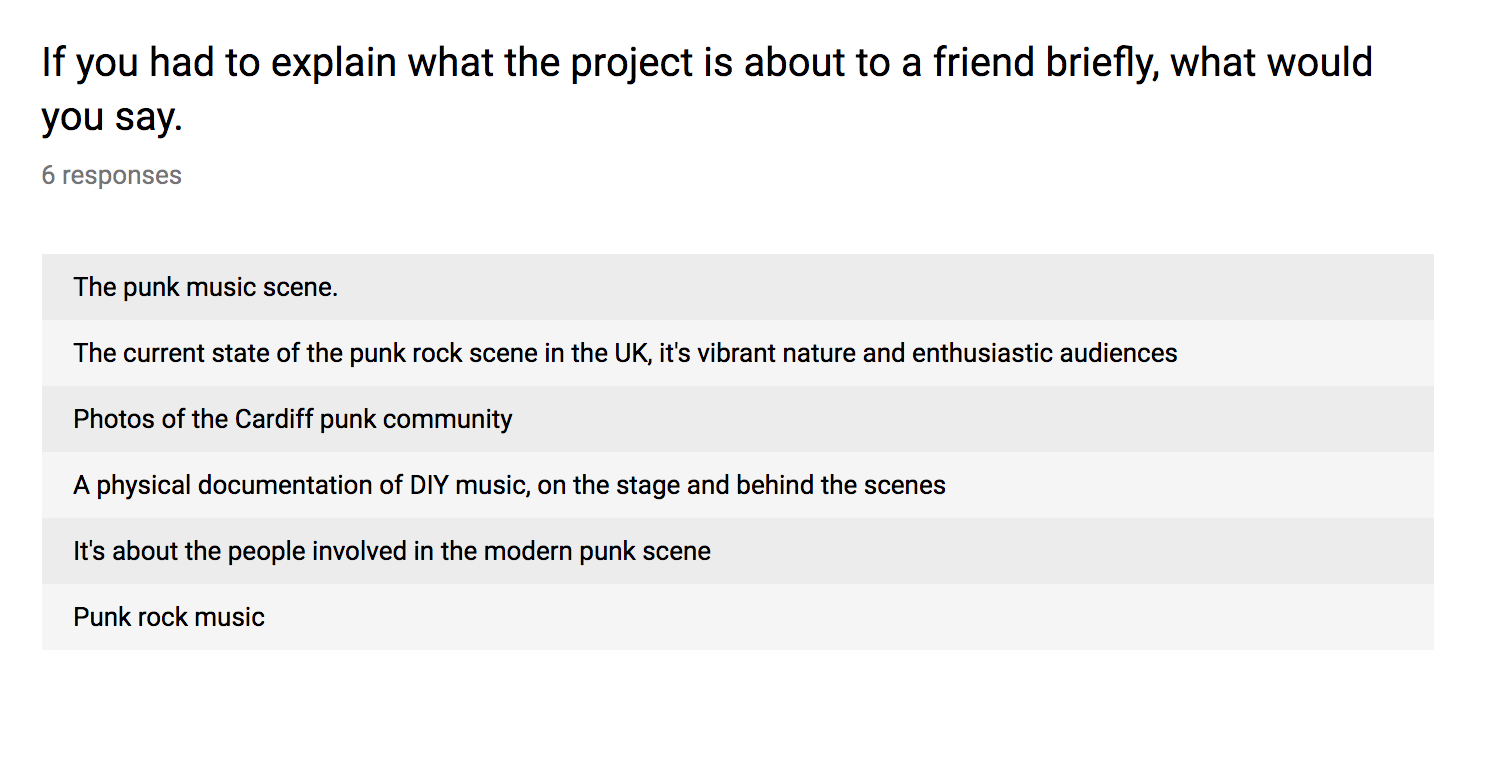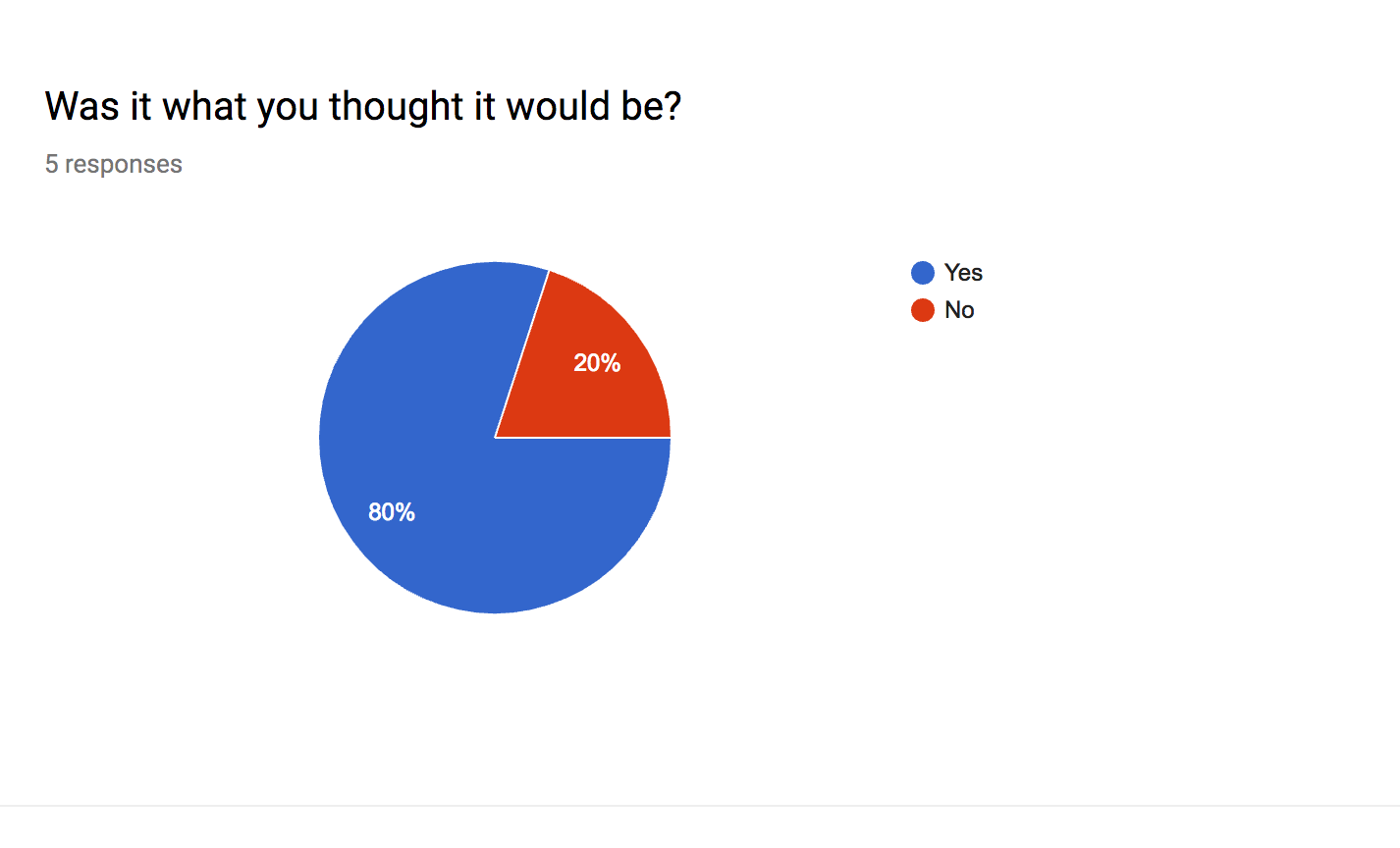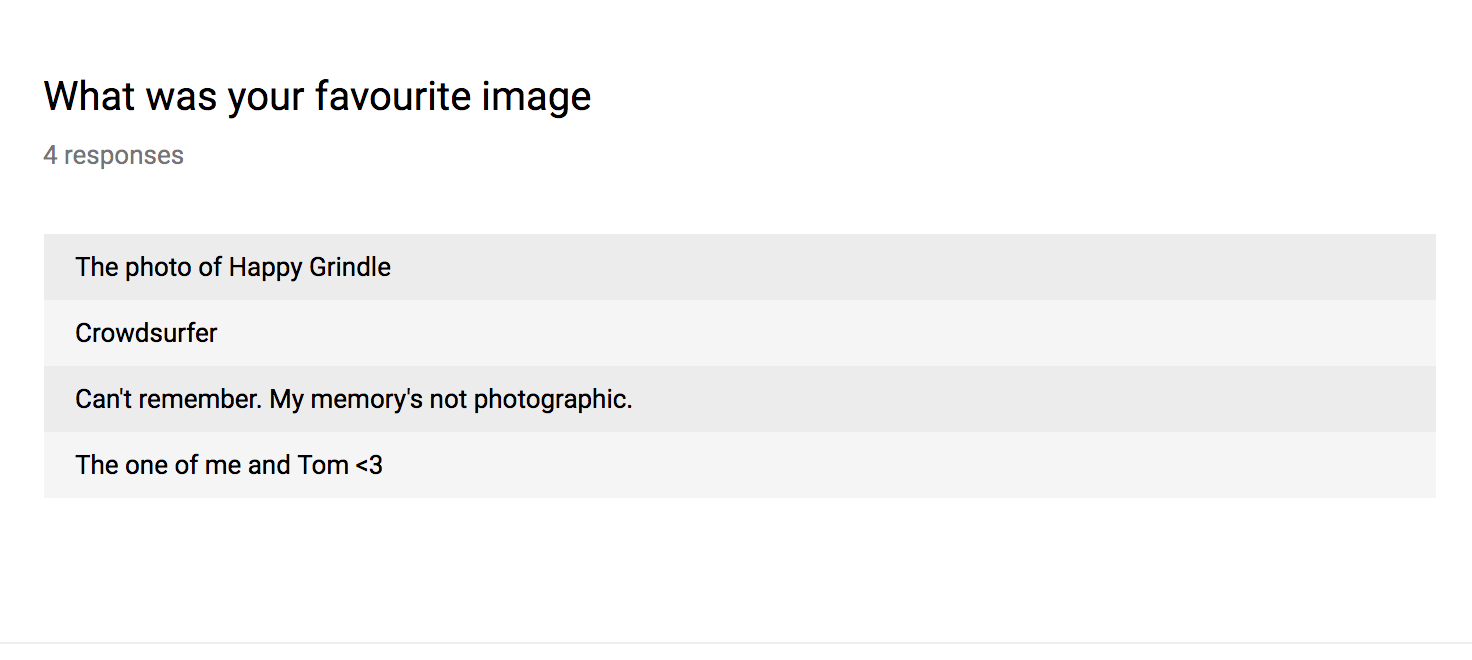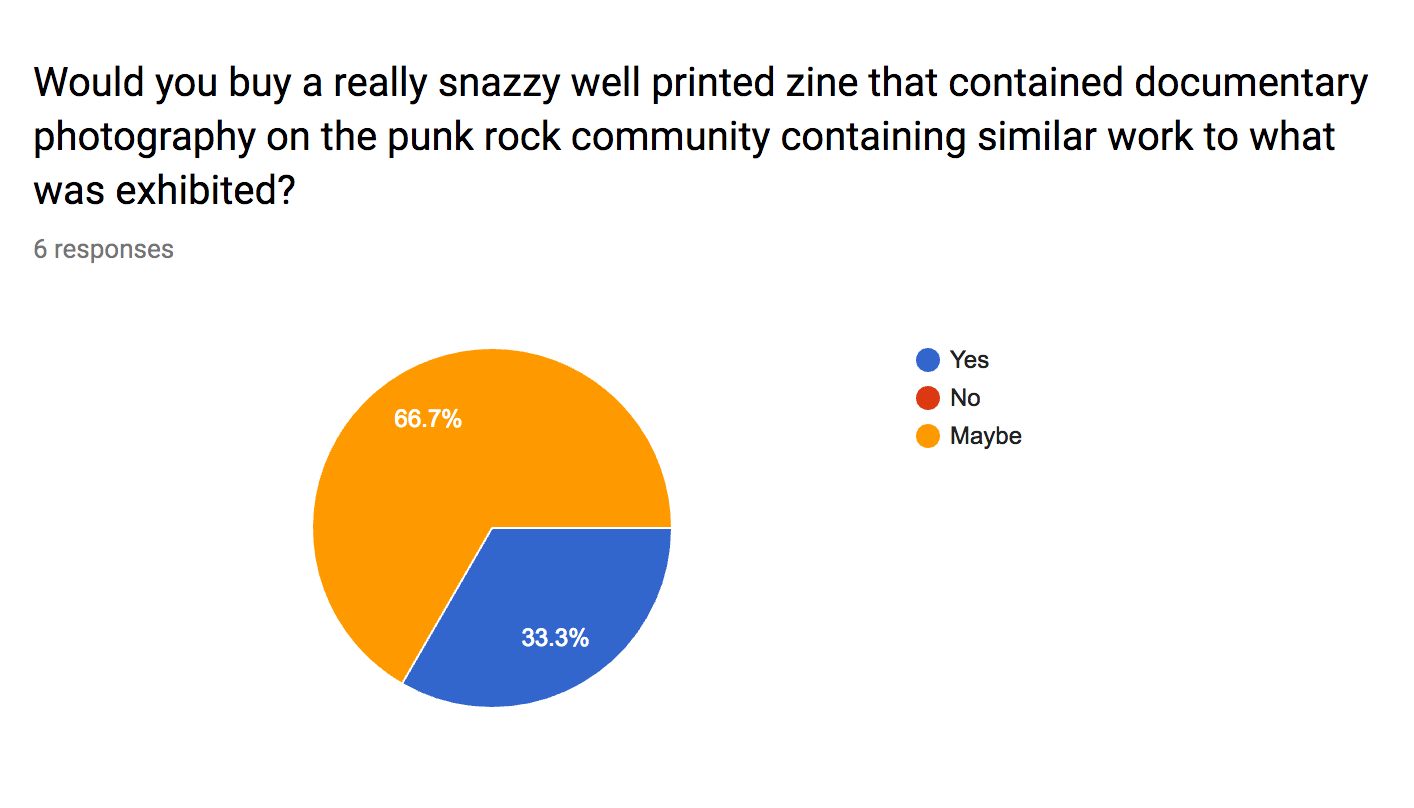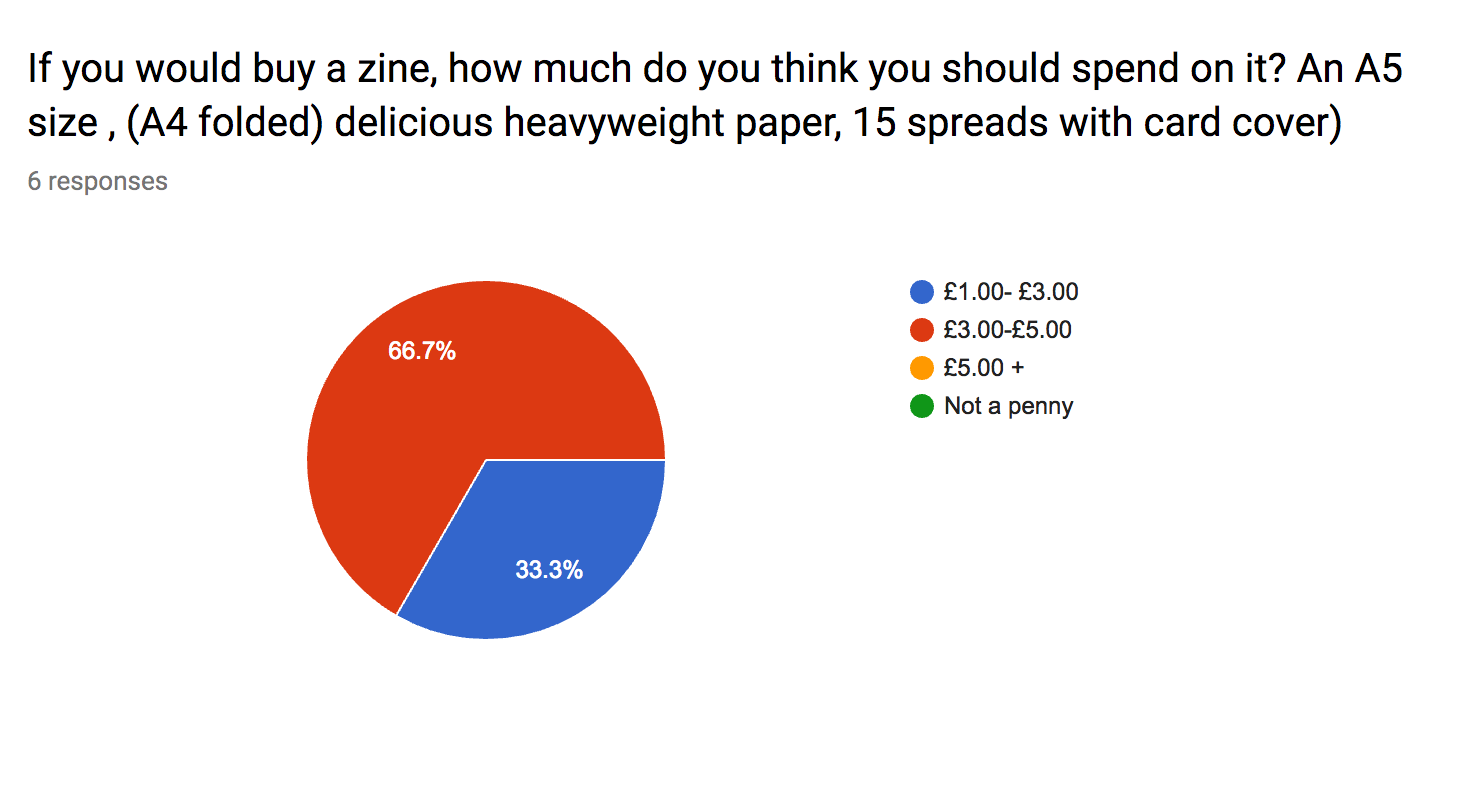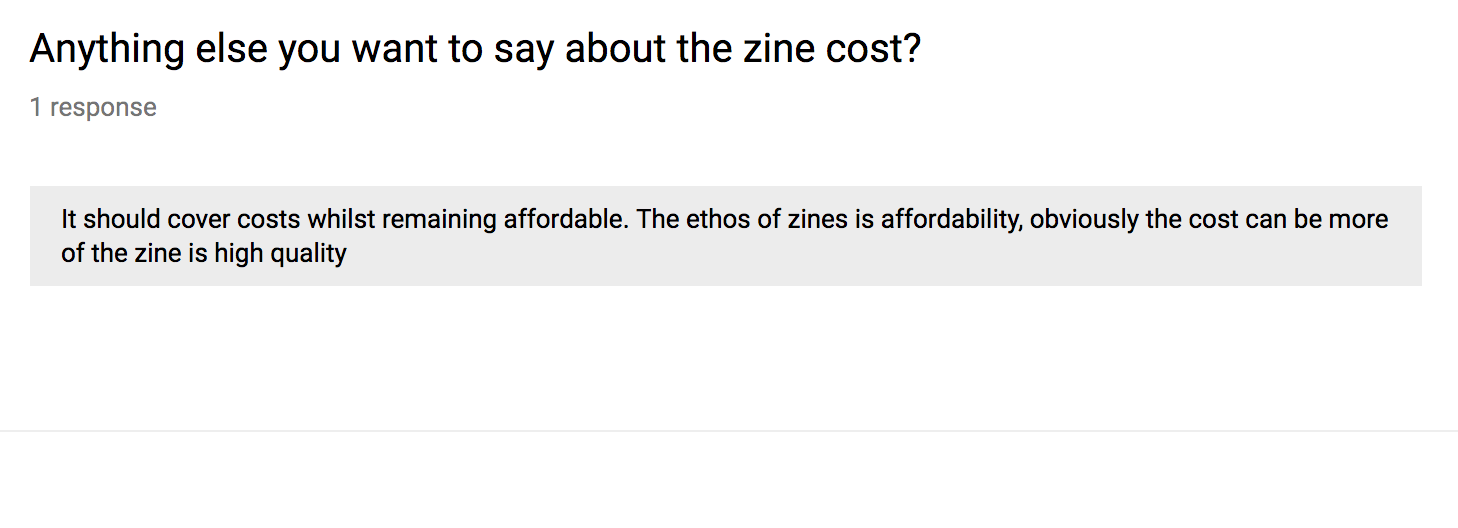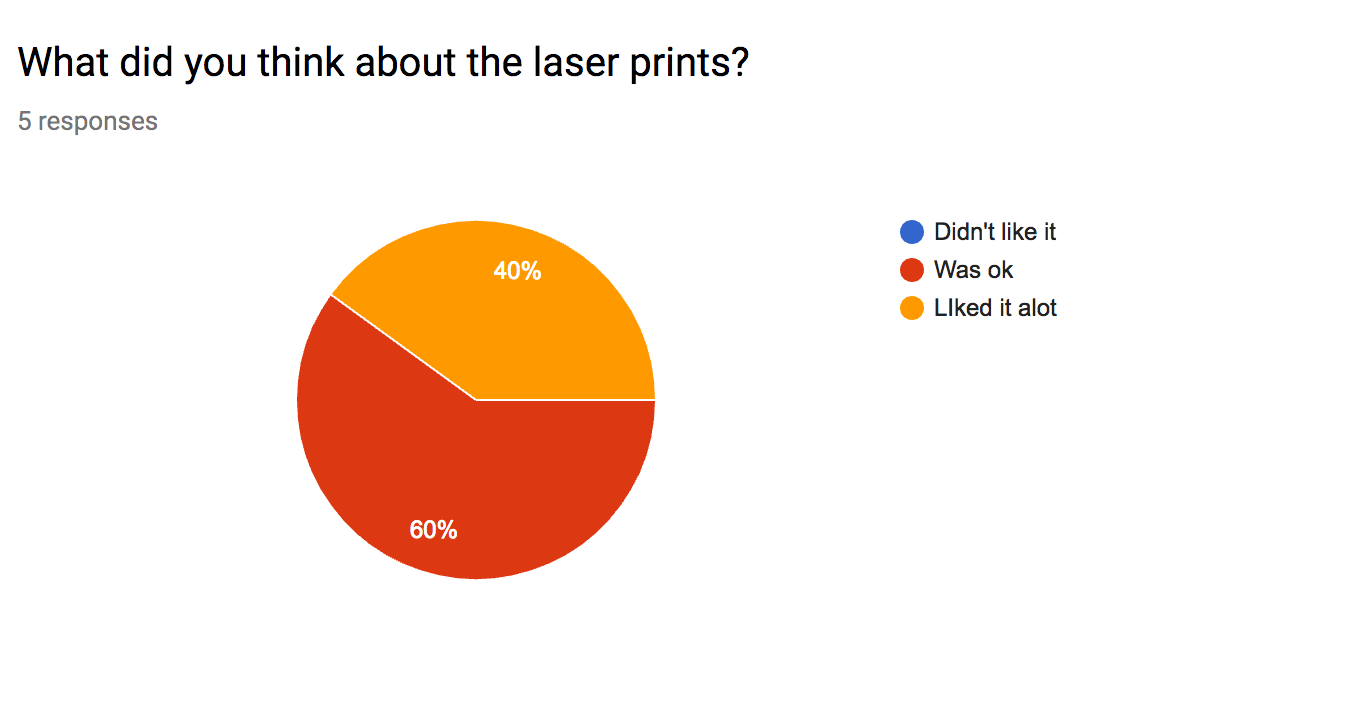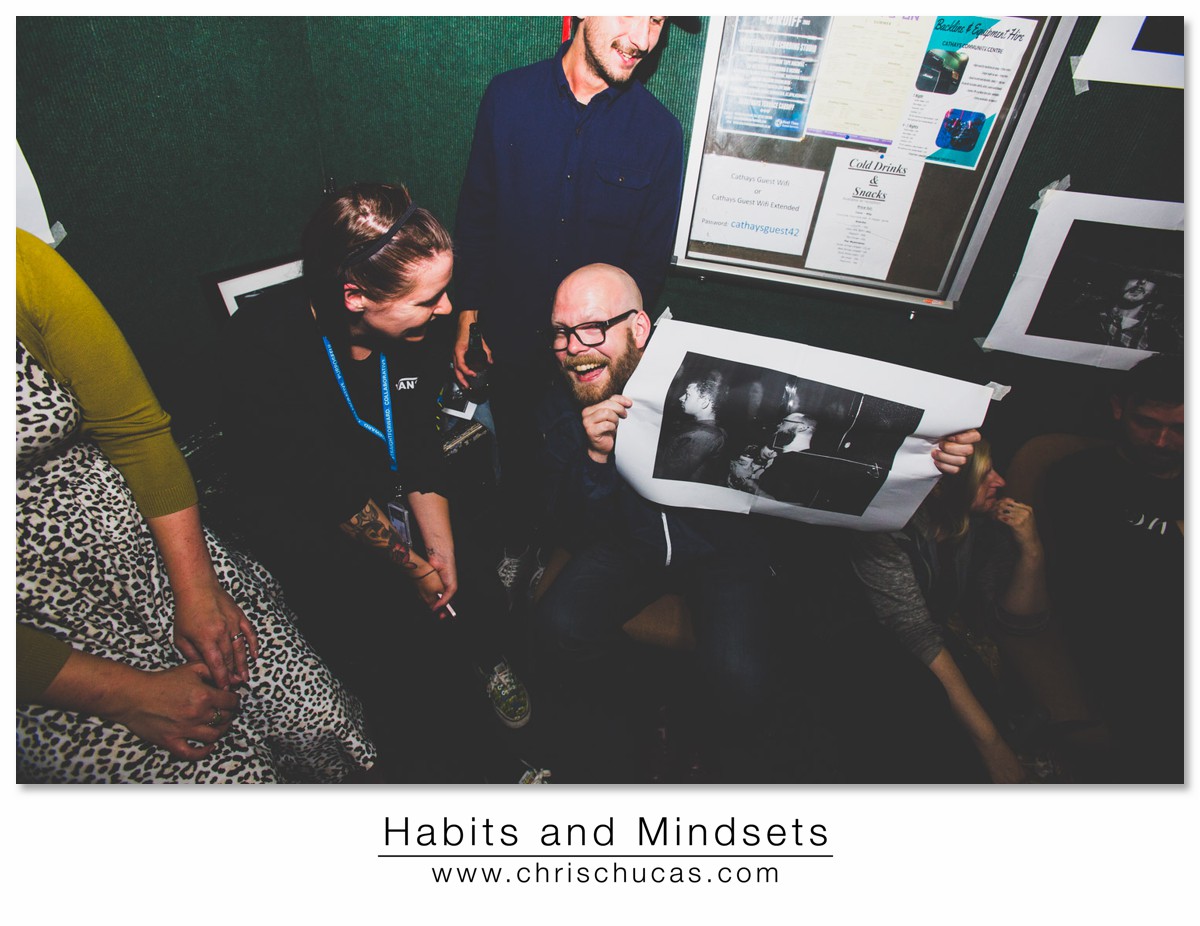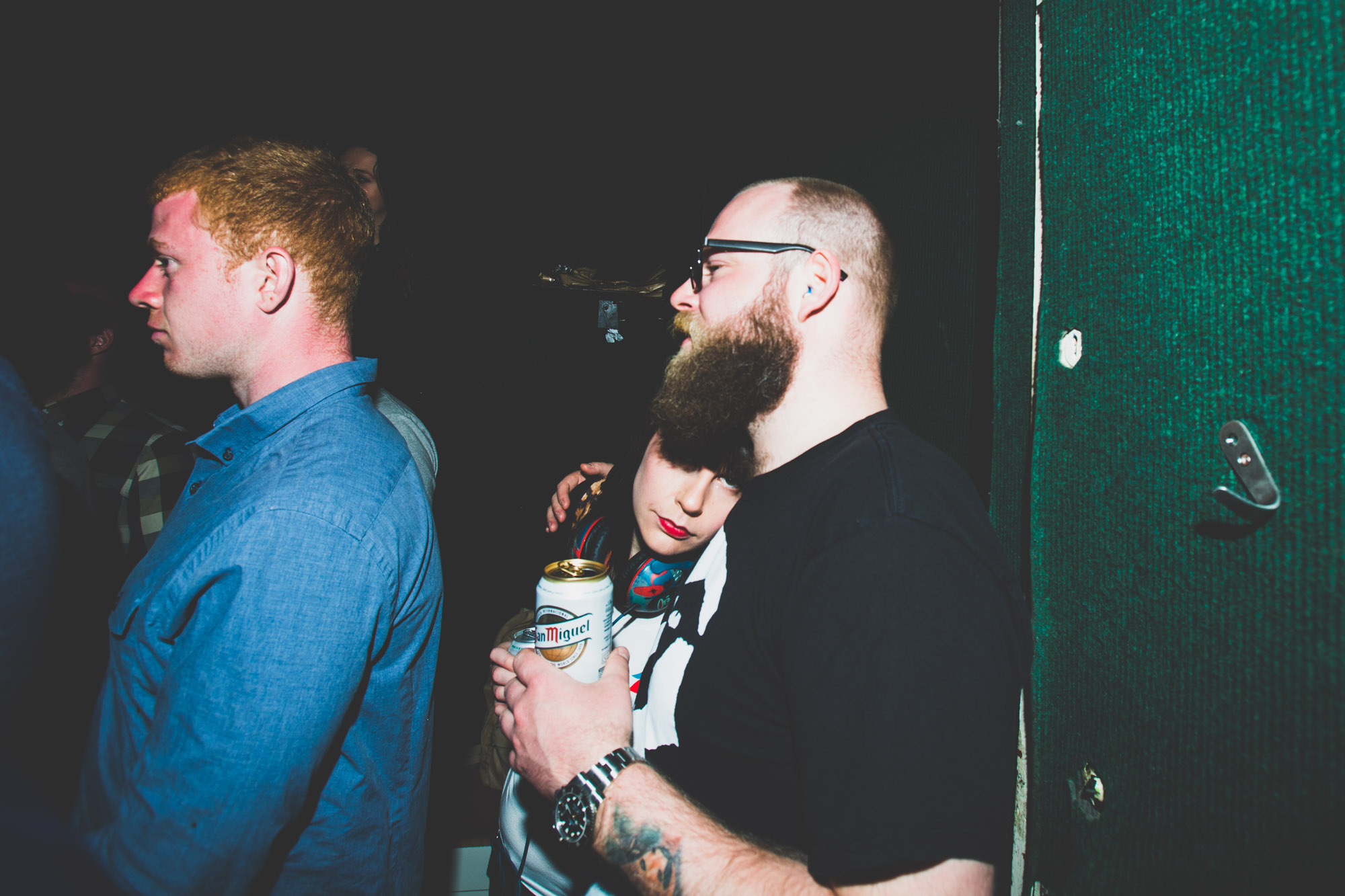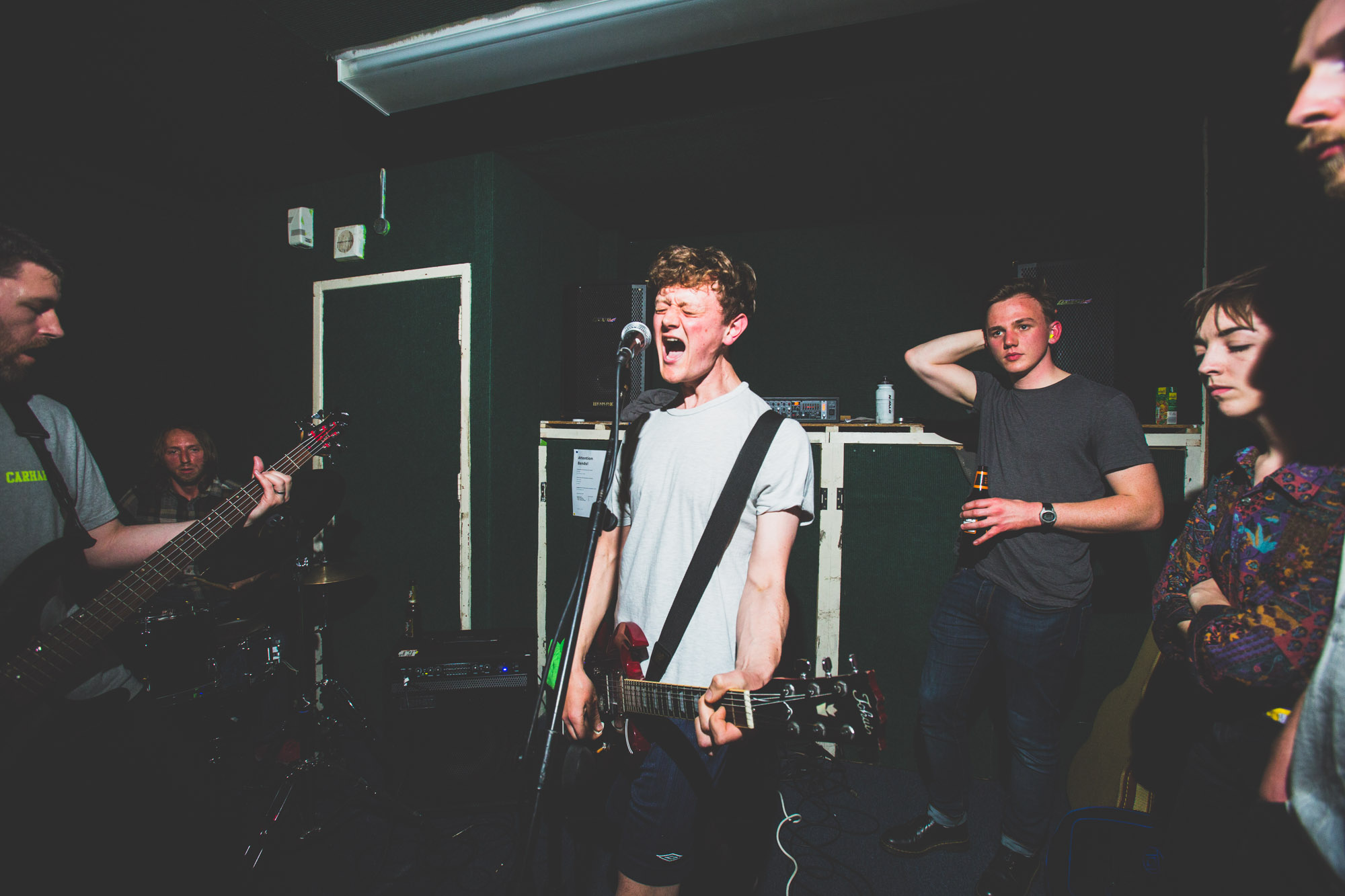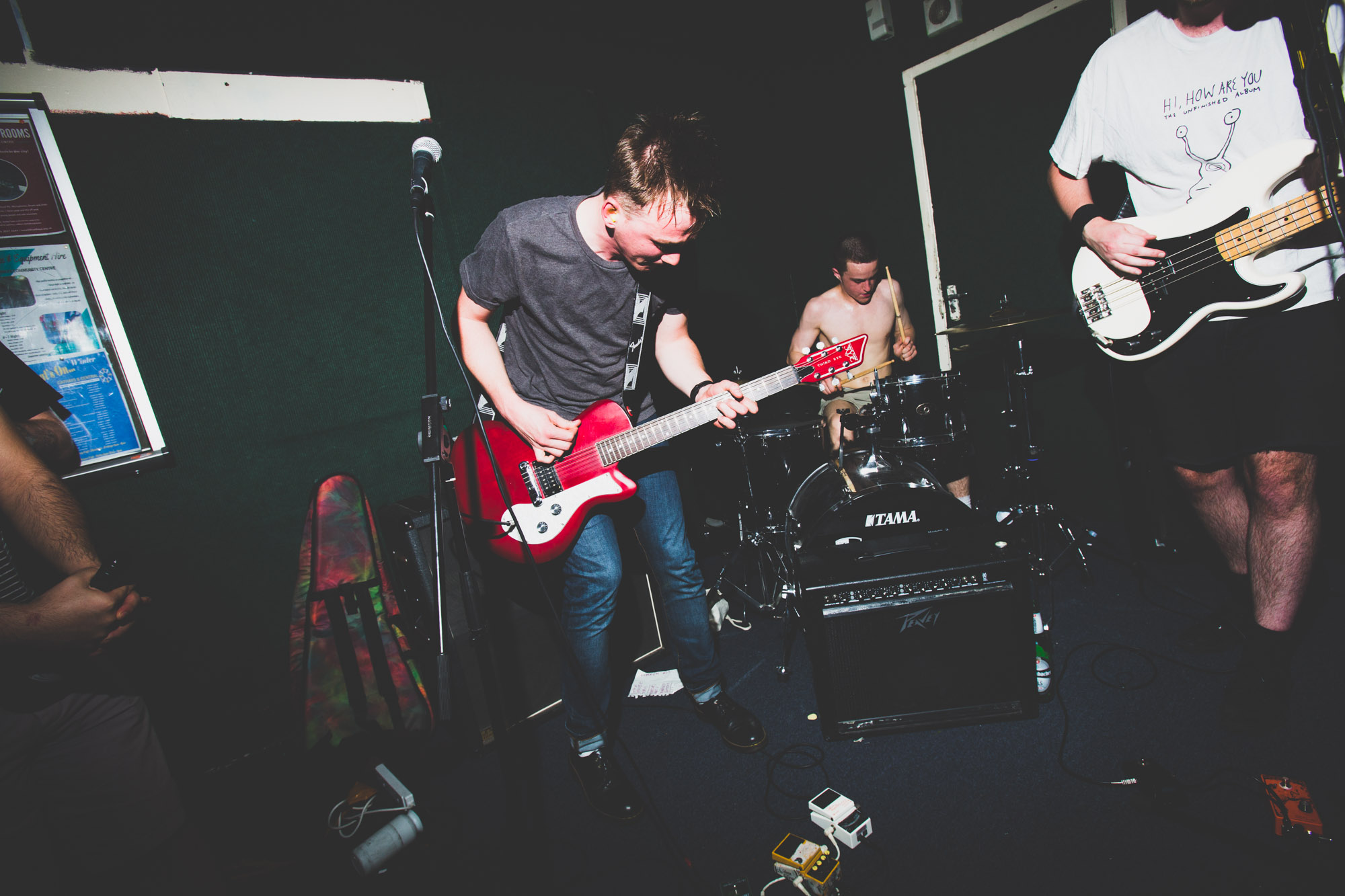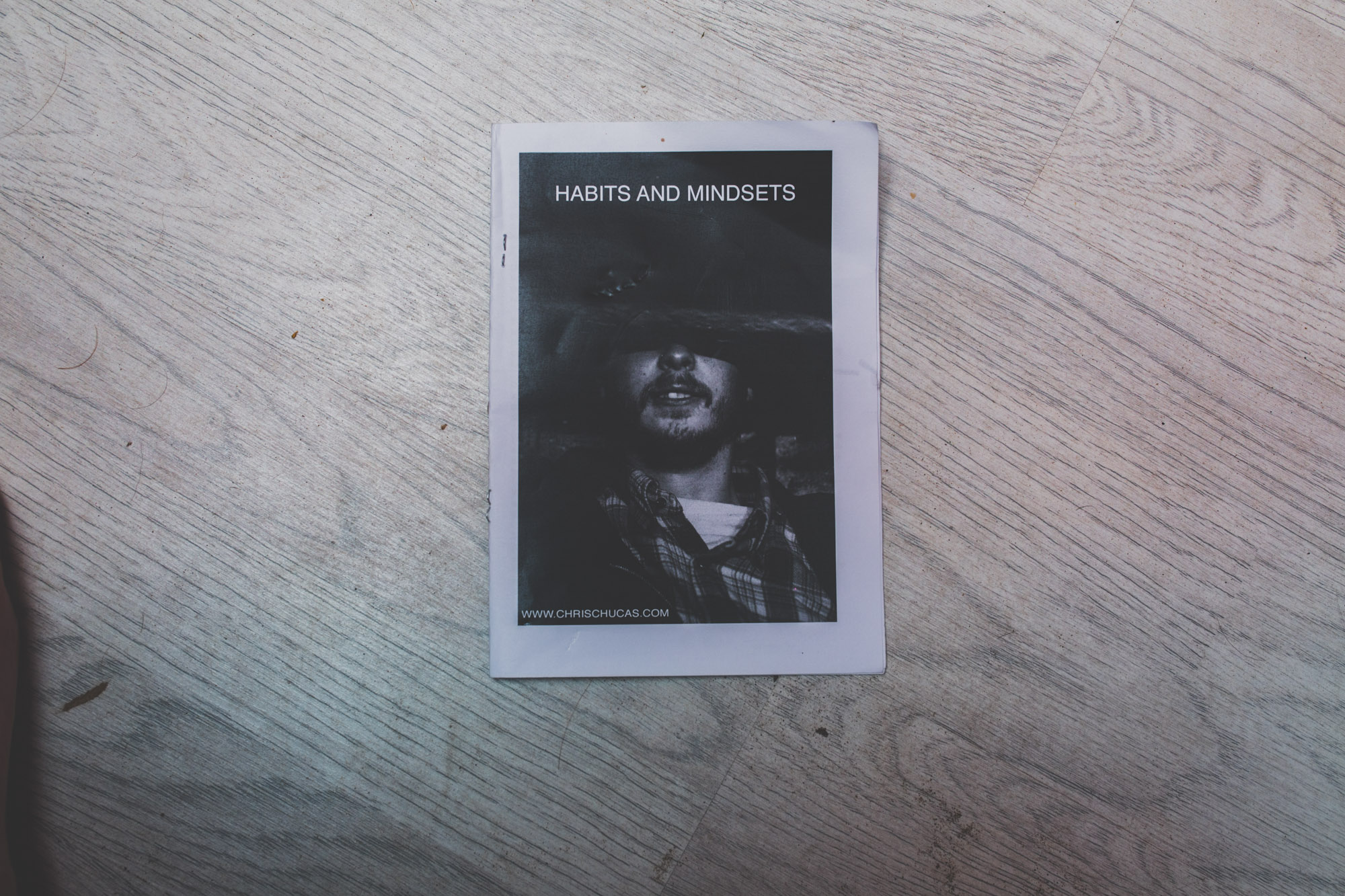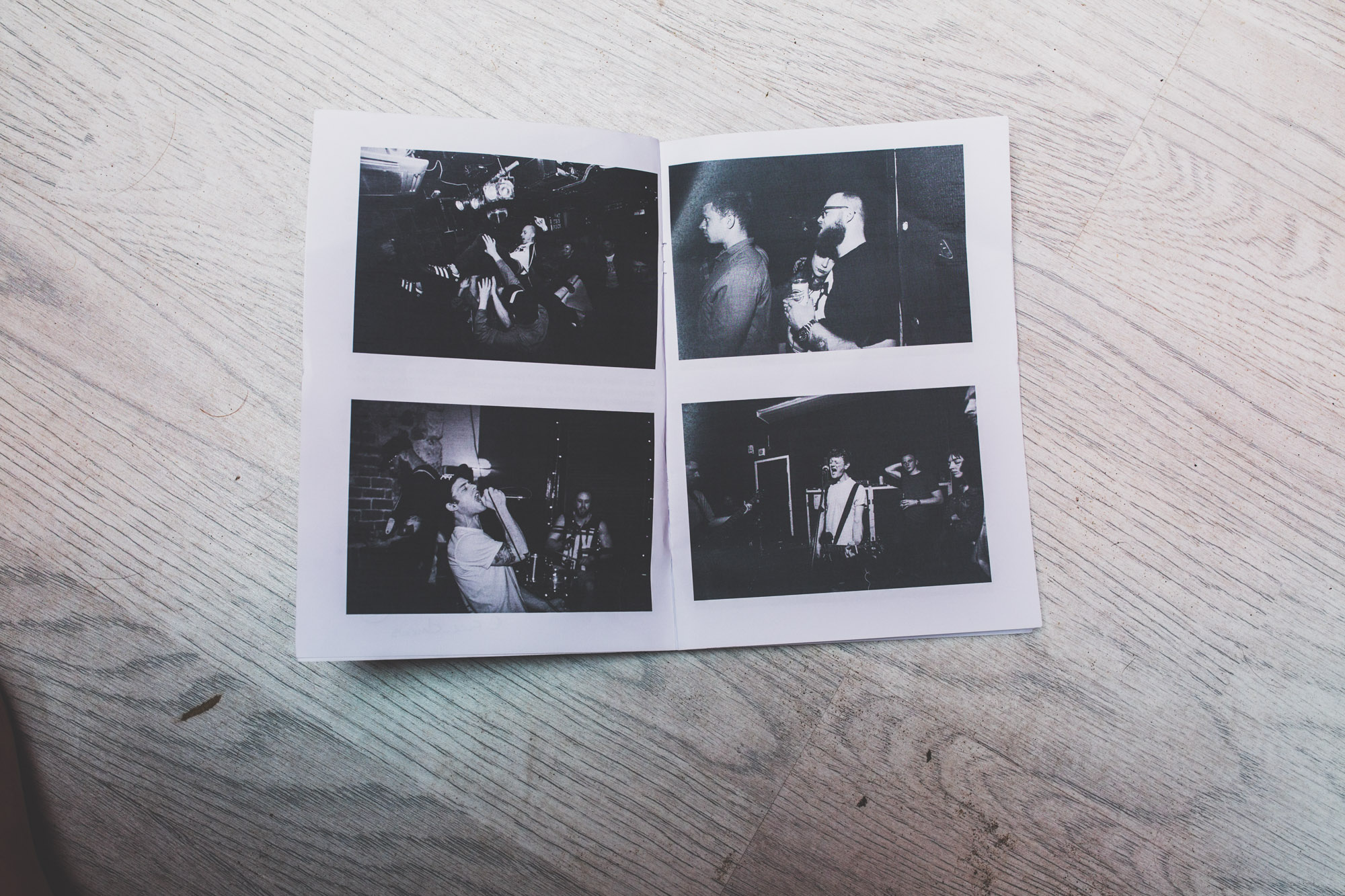This week we had talks from some industry people one of whom was Amy Simmons a creative producer at M and C Saatchi. The tour was in doubt and covered a lot of how things work at that level was expected from clients as well as photographers and how they work as part of the creative team. I definitely feel reassured that working on both commercial and personal projects is a positive and complimentary thing to do.
Read MoreSustainable Prospects Week 8 /
In this week’s presentations we’ve been looking at other factors involved in being professionals or for and focusing more on who buys photography how to price work and other legal factors. Broken down into the simplest form photography is sold to 3 different markets:
- The consumer market
- The commercial market
- The art market
Sustainable Prospects Week 7 /
This week we’ve been looking at the current commercial environment and thinking about who our audience and market are. Right now as a professional photographer I have a consumer market, primarily couples getting married, small businesses in need of photography and video production as well as a handful of portrait clients including head shots and families. I understand it is a huge difference between consumer markets and commercial/art markets. Understanding the nuances developing network skills as well as having a polished and tested professional appearance in these markets was primarily the main factor in pursuing the MA.
Read MoreSustainable Prospects Week 6 /
Soth mentions his admiration for William Eggleston and almost scold himself becoming cynical when looking down upon people new to photography that fall in love with looking at the world in a different way (with photography). I think it was a really sincere point to make and that we could all remind ourselves as practitioners with to look back at that initial excitement I had looking at the world through a camera and seeing everything differently the first time as a great feeling I’m probably one of the main reasons that I am a photographer today.
Read MoreSustainable Prospects Week 5 /
This week we had some discussions about networking and benefits that go with it. We had a very interesting talk with Steve McLeod and Keith O'Neill from Metro imaging and Old Girls Club. It’s really interesting to see how networking is so important and works in them in the editorial commercial side of things. I have some experience with networking with the consumer businesses that I run to fund my art documentary practice.
Read MoreSustainable Prospects Week 4 /
I've always been obsessed with image of making ever since I got my hands on a camera in Comprehensive School. I would take a camera with me at all times, pointing it at everything in my life from having beach fires skating abandoned warehouses, to hanging out with friends and family. I think after shooting so many different types of subject matter, it clicked with me that, the way that I photograph things or see the world around me, can be the primary subject in itself. My history of photography spans so far back with so many areas and intentions, I decided to focus in and look at some of the earliest academic work I shot.
Read MoreSustainable Prospects Week 3 /
This week we've looked at how some people have successfully used Instagram as a new means of promoting their work.
My personal experience Instagram as a business user and as a person using is that of a love hate relationship. I used to really enjoy Instagram when it first came out as it was inspiring to see what other people are doing different parts of the world etc it seem to be more focused on amateur people using their phones and as times for breasts become used more by professionals and marketers. One of my main problems with Instagram is how it has become a tool in which people look at their lives in comparison with Instagram stars and feel inadequate insert quote here
Read MoreSustainable Prospects Week 2 /
Week 2 crj
This week with us to look at some of the issues surrounding professional photography. One of the first was that of copyright and particular example shown to us.
There have been some notable art copyright cases in recent decades. One of the most significant is French photographer Patrick Cariou’s claim, suing Richard Prince and his gallery, Gagosian, for copyright infringement. Read more about the case here, or an even more detailed report here.
Sustainable Prospects Week 1 - From Here To There /
This week we have been thrown back into the deep end with our professional practice module . Working closely with our module leaderAnna Maria Pfab . We took a look at some of the ways people become professional photographers. There has been definite emphasise on the assisting route with an interview from Will Hartley one of Anna Maria Pfab's futures. My personal relationship with photography has been one consistent up's and downs and plenty of hard times.
Read MoreSurfaces and Strategies Week 12 Feedback /
Getting feedback
I was really interested in finding out what people thought about the exhibition and the zine. The feedback I had in person on the night was positive but I wanted to reach out and get some feedback from people in a more distant way, perhaps it can be more truthful. I designed a google form to be filled out and shred the link to it on my facebok page and messaged it to friends that went. I had a few responses and in genral that fall into the same feelings I have.
Looking back over the Surfaces and Strategies module this term I've had some time to reflect upon these ways of engaging with the audience. I defiantly feel that these factors should be addressed on a project by project basis. In this project I have identified that I'm documentation the punk rock community as a member of it. So when thinking about who this project is for I've identified my audience as members of the community themselves. This was a major consideration when deciding on where and how to present the work. You can see more about that in my previous post here.
I would consider the feedback a good indication that what i'm setting out to do is working. I think I'll continue to make zines however I might look into printing them in a better format. The toner cartridges at home weren't as cost effective as I wanted and I have heard good things about a company called https://mixam.co.uk/zines .
I really want to focus on reaching a wider audience and using the zines as a way of doing that. An additional thought was to run a promotion or some kind of sharable link on the facebook page to help reach more people. Aside from that I can't really think of anything else to mention about this module that I haven't already.
Some links to previous thoughts and considerations...
Surfaces and Strategies- Oral Presentation /
Surfaces and Strategies-Oral Presentation
Surfaces and Strategies Week 11 /
Week 11 - Exhibition
This week I installed the exhibition and had the opening night. I think that it was a positive experience and a success. I talked before about having a fairly anti gallery culture outlook. I feel that a lot of the spaces that showcase art with a stereotypical white wall, minimalist fine art ‘look’ can be very elitist and excluive. They’re exclusive by design and meant for a select few and it doesn’t really sit well with me as an artist.
I really admire artists that use spaces to exhibit their work in a less exclusive or elitist way. People like Jr, although the choice of space is an integral part of his methodology in general and serves a purpose to deliver a meaning with the work. Even if it is a by-product or secondary the public space still appeals to me as it’s for those people that use it.
I am really pleased with the chemistry between the space, the audience and the work. To me it felt very organic and it was very relaxed. I had used my Facebook page that already had some fans interested in the work to promote the event as well as twitter. I had been to a few shows the week before and had seen that there was a show on with some core DIY Punk Rock bands from Cardiff happening at the same time as the opening. This meant that a lot of people that might have gone may not have been able to because they had tickets to the other show.
I had asked some bands to play the show and the format I had in mind was for it to basically be like a regular show with bands turning up and playing people having drinks and socialising in between sets. Most bands were either playing the other show, had band members in bands playing at the show or had tickets to go. This just reinforced how closely tied and linked together the community is. I did manage to get two bands to play; ‘Fight like a cow’, and ‘American Graffiti’. I’m close friends with the guitarist and singer from FLAC and I had briefly met American Graffiti before. Everyone was really supportive of the project and what I’m doing with it.
My wife (Becky) and I headed over beforehand and picked up the zines that I had made from a printers.
I then set up my phone to broadcast a Facebook live video of the exhibition being installed with the hopes of getting a few undecided people interested in coming. I had used a program called tiler with my mac to print A2 size prints using multiple a4 sheets of paper. We taped them together before I stuck them up on the wall. In addition to the a2’s I put up some a4s as well. I didn’t really think too hard about placements but I did lay them out on the floor to see how they worked together first before making the last taping to the wall. I tried to group images together that shared the same level of energy.
The bands arrived, I helped sound check them and then played some music via the pa while people hung out and looked at some images.
Both bands played and said a little something along the lines of thank you and kind words supporting the project. I had the zines to hand out to people that might want them which had information to direct them to the website.
A few prints fell off the wall due to the room being really small with no air con and having a lot of people crammed in together watching bands jump around. It got very sweaty and humid. I didn’t rush over to put them up, because I kind of felt that the living breathing sweat from us all bringing the prints off the wall was a natural process, the prints had been used and then they fall off and fade away. It’s almost like it’s alive.
It’s this relationship we have with the physical objects of ‘the photograph’ that I both love and hate. I love how it can be liberating and empowering to have a piece of paper in your hand that can stir up feelings and personal experiences, but I don’t like how the object itself can become the main focus hijacking the intention or the reflecting moment. Something I found interesting from Clark was:
It’s a demonstration of contemporary art of sorts, do you think the art world Is too exclusive.
I think the art world is much too exclusive because of the prices and what happens in extremes, which is the norm now. Collectors like Peter Brandt whom I know and Peter is good guy. Peter and other collators who are billionaires if they want a painting and it comes up for auction they’ll out bid everybody by 5 mil dollar. Like the painting would go for 5 mil Peter would pay 10.
'Photography is about Light shadow and feeling, that’s all it is.' Larry Clark -https://www.youtube.com/watch?v=KIlqvoldS6Iq
Culturally we are in a new phase where prints are around less every day. I wonder if this could mean prints are easily labelled art photography for the simple fact there are less about. An interesting article I read mentions.
“Now that images are on a screen, they’re sort of ‘forever young’, and it becomes difficult to realise that there are many things that connect us to the past in terms of basic human emotions. These become more difficult to tease out when everything looks contemporary.” - Lisa Hostetler.
http://www.bjp-online.com/2016/10/a-matter-of-memory-photography-as-object-in-the-digital-age/
Aside from the cultural considerations from photography, I must examine the cultural and historical implications of punk rock itself. I’m dealing with people who are involved in the DIY scene of making music and bringing people together often for great benefits for those in need. I don’t want to be associated with or add to the rise in the commercialism of the ‘punk rock’ aesthetic in which people are romanticising motifs from a sub culture to be edgy and different from high society as this seems a little wrong to me. Here’s an example of someone turning the punk rock aesthetic into a high fashion cat walk collection.
http://www.metmuseum.org/exhibitions/listings/2013/punk/images
It’s completely inaccurate and potentially unfair to the actual community today.
Much Like Nan Goldin and Larry Clark two of the most influential artists to me and my practice both have very strong personal opinions on this.
Goldin struggled to get her work out to begin with so made slideshows and travelled her show around as a unique slideshows accompanied with music, which was a big part of the subcultures in her work.
Clarke has also brushed upon parts of the punk rock community with his ‘Kids’ film that involved skateboarders, the two are closely linked so it’s interesting to see his work as I can identify with it. I would like to reach my audience in the same way that Clarke manages to reach his. I was a wild teenager very similar to some of the subject of his Tulsa series and his Kids film. It’s that authenticity and honesty that I would like to show through my own work, but paying careful consideration to not over sensationalise the general mood or feeling of the project by giving special importance to images that are connote extreme . I aim to portray the community in a way that’s not going to over exploit images depicting highly energetic, emotional scenes. The dilemma is that it is a part of the community and what we all love about what punk rock music can do.
These have been my main considerations with curating and installing the work as well as shooting the work in the first place.
I’m really aware that because I’m so closely involved with community in which I’m trying to portray, I feel an extra responsibility with editorial decisions. I like to check in with myself and reference what I’m trying to do against what others have done before me and re assess as I go along. Right now I feel confident with my intentions and in my production. I’m building upon what photographers like (((((((( have done in documenting the punk rock community before me. But setting myself a frame work that involves questioning some ethical and personal methodology from thoughts of photographers I look up to, like Goldin and Clarke, constantly re assessing my own feelings on it as I progress. It’s certainly not easy.
Surfaces and Strategies Week 10 Surfaces and considerations /
Week 10
This week I have been looking at my ‘surfaces’ making decisions and thinking about how it will effect my work and the way in which the audience interact and view the work.
Exhibition
I’m holding my exhibition at Cathays Community centre. I know some of the staff there and a lot of my friends and members of Cardiff bands have been practicing at their rehearsal rooms. After an initial phone call I was told that I was allowed to use one of the rooms to exhibit for the week and I was also able to have an opening event. I booked it for the 18th to the 25th which didn’t cost me anything and the two hour slot from 7-9 cost me the same price as it would to use it as a reversal room, about £15.
The fact that bands use this room to practice and write music is relevant and fits in with the project well I think. I’ve been to lots of shows at this space and shot work here before.
Images from previous shows at Cathays Community Center;
Publication
I’ve been working on my dummy book and my ‘zine’ which is my preferred medium for it. I feel that a zine is a natural choice, because of it’s deep rooted place within the punk scene historically.
They’ve survived the culture and are still around today, albeit a little less now with online blogs and forums but there still about.
Right now I’m pretty set on having only images. Writing could be interesting and I could perhaps write something or ask other members of the community to submit to it. Right now it’s a stand alone project but it could (if it’s successful) perhaps be published regularly. I quite like the idea of being able to reach a niche audience with relevant info about the project. This could help me show work off and also help me reach new people to work with.
I’m adjusting the copy that I have right now as I’m not totally happy with it. Some feedback I have had from lectures is that it could have a less formal design. As I’ve mentioned before, all my design choices and decisions have been on looking professional with my experience as a commercial photographer and film maker. The suggestions I had where to make a physical copy with prints and glue and to then scan and print that to make the zine. This is not faceable for lack of a scanner and the extra time involved.
Moving forward I’m going to change the cover for an image but I’ll probably stick with the 2 x 2 format for the images. I could potentially write text underneath the images. Perhaps even hand written captions. If it were to be on every copy I would have to literally write on every copy or produce them in the way I mentioned earlier (which I can’t right now).
Surfaces and Strategies Week 9 Reflecting on my work so far /
Week 9
After having tutorials with lecturing staff I’ve thought about my practice and the direction that I could potentially head towards.
I think I could summarise my work into three approaches.
1. Careful traditional reportage style image making.
This method involves me making contact with people within the scene, carefully explaining my intentions and what I intend to do. I explain that I want to document the scene as a member of it and to continue on from where others have left of. My concern is in portraying the people within the community in a sensitive way. I pay close attention to body language and how people react to what’s going on. I often put the camera down and concentrate on building a good rapport with people before taking any images. Then after building these good relationships with people I continue to work with them documenting everything as I go along. I often find the longer I work with people the better the images are and the more they say about the community.
2. Self Portraits
Not as big or as separate an approach to the first approach but more of an extra element to it. Taking inspiration from artist’s like Nan Goldin, I put myself into the work. I feel that by putting myself into the work it’s symbolic of a more democratic approach and shares the perceived power of the image maker amongst everyone. I find that it’s helpful, in that it shows people that I’m more of an equal and not above them. I’m offering myself up to be in an image, just as I expect the people I shoot to be in mine.
I like the way that Larry Clark and Nan Goldin include them selves in their work. For me as a practitioner I feel that adding this autobiographic element both suits the work and adds to it. I am constantly trying to make a power neutral relationship between me and the subjects in the work.
3.
Re-contextualising work from the community
I have been working with bands and asking them for lyrics to be used in the project. I take them, print them on laser jet paper and place them into the environment. I came about the idea from a previous collaboration with a fellow student Justin Carey. We both shoot work a lot at night time and share similar ideas about solitude and loneliness, and how it’s possible to be lonely whilst being around people and how being aloneis different. I spend a lot of time working at night, a lot of time running at night also. I would always listen to music on these night runs and think about my mortality and the fragility of life , a lot of depressing themes. I realised that a lot of people in the punk rock community deal with similar topics and a lot of them manifest into lyrics and songs. Bringing it back to this feeling of isolation at times and other times feeling connected to others talking about the same topics is fascinating to me. I could feel terrible and down about things but listen to someone else with the same thoughts on it and it would make me feel better. I wanted to explore this interconnectivity that music and especially punk rock music has with me and the people I know.
I have been talking to lecturers about the progress of my work and it’s made me think about what it is I’m trying to do. I think I’ll continue to approach it with multiple methods but I do feel that the re-contextualising lyrics is the weakest and may soon have run its course.
Surfaces and Strategies Week 8 Workshop Considerations /
Workshop considerations
This week there have been a few discussions about workshops and the role that they have with photographers. As I’ve mentioned before it’s not something that has been part of my practice yet. That being said, after discussing with some of the lecturing staff, I think there could be potential to experiment with one. My first impressions of a ‘workshop’ are those workshops that photographers use to teach other photographers ways of working or technical aspects. This has never appealed to me and I’m always sceptical of them.
Workshops in a wider context can involve connecting artists with their audiences, enabling them to get direct feedback and even encouraging participation. I’m constantly looking at my relationship with the subject and audience within my practice. The idea I had for a potential workshop would be to go to a show where bands are playing, take portraits of people and print them onsite with a laser printer. Then I could place the prints up on a wall. It’s out of my normal methods and it would be an interesting exercise. The three elements combined; exhibition , publication, and workshop are all optional. Being a full time professional photographer and film maker and this being a part time course I’ve had to consider what is plausible. There just isn’t enough time for me to do all three. I am planning on going ahead with the exhibition and the publication but not the workshop. At least not this term.
Reflecting back and considering if I should implement any changes to the core methodology of my practice, I’ve concluded that I won’t right now. I’m quite happy with the progress of the work and how it’s been developing. I’ve spent a long time thinking about the way in which I work and my role as a photographer. I’m aware that my practice isn’t changing drastically throughout the course and at first I was worried this might be a lack of adaptiveness or even a stubbornness in adapting new ideas. I’m checking in with lecturing staff when I can to talk about it and they’ve been positive in feedback, this reconfirms my position. I’m always really worried about being stubborn or coming across as arrogant. I am getting more comfortable with sticking to my decisions. I feel confident in my practice and what I’m doing.
Surfaces and Strategies Week 7, Publications and ZInes /
Week 7
This week we’ve been asked to look at the publication and making a dummy book. I have had a slightly different journey with my book. I talked about living amounst images briefly in the first module. I’ve been working constantly and printing of a fre of my faviourote images via my laser printer in monotone. Its not great quality and it does have the draw back of not being able to print colour images. It does fit in however with the aesthictic and converntions of zines. Zines and Photobooks are something that I have been researching and looking at as well as a more professional looking photobook for quite some time. This module and how its asking us to look at these surfaces are pushing me to formulate ideas which have been brewing for some time.
I think that a publication can be beneficial to me in my practice to reach audiences. I’m at a lot of shows and zines are a staple at most merch tables. If I were to produce a zine it would be very accssbale and natural sitting amounst others at shows. Most of the time the zines are made by record labels or groups of band members themselves. If I were to produce a zine and hand it out ( or sell it at cost price) then that could include some information about my project, my intentions and ultimately help me make contact with new people I’venot yet worked with.
Although I consider myself a member of the community, some people don’t know me. I feel that there are some people who would be weary of a photographer as I’ve mentioned in previous blog posts. I feel that a publication could serve as a reference almost. If others, See my work and people I’ve worked with along with a project statement it could serve as an informal reference perhaps. Like I’ve talked about several times before, building a good relationship and trust with people is paramount to my practice and one of the issues I have is that some people in wider circles outside of the people I already know may feel slightly apprehensive and that means I can’t produce as much work.
A few weeks ago I had made a rudimental zine. You can download the pdf here.
Design issues..
I’ve had a few people give me feedback on it. One factor that I am aware of is that being a working photographer, video producer and editor I have become slightly indoctrinated to conventional design rules. I say this because I always aim for a clean and easy functionally text fit for its purpose in different arenas, mainly commercial video and photography. After getting some feedback from lecturing staff that wasone thing that jumped out. The text, font used and design was very non art. The way that I had layed out images was also picked up on. A4 sheets folded into an A5 zine so that each spread had 2 images stacked vertically on each side. I don’t know how to arrange in another way. I’ve tried and it feels very staged and un organic when I do. One suggestion was to print out the images, cut them, glue or tape them into a master copy and then scan that copy to print the rest. I feel like that’s a lot of extra work that’s taken me away from acatually shooting more work. On top of that I don’t own a scanner so it would involve me buying one or driving out to a place with one and paying to use it. This isn’t that viable so I’m going ahead with two plans. The first is to produce a zine as a publication like I have done but making adjustments and taking on feedback for things that I can change without extra equipment. The second is to experiment with the hard copy dummy book which will develop into a more formal photobook which will be in addition to the zine.
Timeline
As I see it I think the zine could be published for the exhibiton but also has in editions perhaps quarterly or annually.
Contributors
I could potentioally ask other members of the community to contribute with guest writer spots. This seem slike a good idea but I am approaching it with slight trepidation as I have slight concerns on how the text could be detracting form the work and also how it could be conflicting depending on the writer and subject
Another idea I thought of was to have a part of it as a potential collaboration. Definatly not he whole issue but a part of it. Maybe a feauter. I have old dslr kit I can hand out and let contributors make there own image to submit.
I deifinnatly feel like theres scope for this to prgoross over the long term but I have a good base to start with for now. I’m excited to see it’s reaction.
Surfaces and Strategies Week 6 Exhibition guidance /
Week 6 Exhibition Guidance
Exhibition spaces?
It’s a consideration to think about. Where I place my work and who looks at it is all part of the tryst of the ‘art’. This can be manipulated in a way for a desired effect and to also raise questions and make the viewer think. However, I’m not totally sure my practice would benefit from employing such devices. It’s important to think about the potential and the effect that both venue and audience have.
We looked at artists who have employed these strategies within their own work, one notable artist who does this is; JR. In his Ellis Island work, he displays archival images of hospital patients, in Ellis Island NY, amongst the environment in order to (perceive?) it’s history. It’s an interesting way of looking at images in the context of time. Images that have already been taken, being placed into the ‘now’ makes us think about why that is? Looking at history as an object in the present, somehow becomes more reachable. It being more tactile makes it more real and relatable. His primary focus shifted from the images to the experience had by the viewer.
This has made me think about the exhibition and some key questions. Am I installing art? Or am I making an installation. They might sound similar but as Claire Bishop states from her discussion of installation art;
‘For her, the two are separated by how the works are considered. Whereas in 'installation of art', the importance of the individual works supersedes that of the total experience, in 'installation art', there is an emphasis on the whole situation as the experience.
For my practice, I am producing work for the community as a member of it. I mentioned in earlier posts, that I wanted to take the importance or inflated sense value of the actual object away. I don’t want the importance placed on the document, but rather what it symbolises
I am pretty certain I will use cheap laser jet prints in order to achieve this. I feel that it has close links with the community that it’s born from also. The Punk Rock community has been well known for its DIY ethics with handmade posters and zines being made cheaply in order for it to be widely accessible.
I hope to install prints at a venue or at a practice space, it’s normal to see posters with art work there. The key consideration of choosing this space is that the work is living there while members of the community are working and using it. Bands rehearse in practice rooms and write new music, which ultimately will be played out at shows. It seems a very fitting and organic place to show the work.
A street test outside a venue earlier this year.
Other than an official opening and or inviting people to come and look at the work, it could quite easily be lost into the background, especially with it’s cheap production. I think this is perfect, it perhaps echoes my sentiment that I am documenting what’s going on. I’m not trying to romanticise a sub culture or community like many others before me have.
I’m working with an honest and sensitive approach as the main priority in my practice. I’m documenting what’s going on. I’m trying to create meaning from this subculture. I want to reveal another side to these people that perhaps hasn’t been approached as much as the sensationalism before. It’s this primary motivation that I try and make most important to me.
There seems to be lots of photographers that deal with dramatic images and outrageous images of the earlier punk movement but I feel that there is a lot of room to address the new punk rock scene which I feel has more thoughtfulness and sensitivity at its core.
What’s interesting to me with Ed Colvers image of minor threat, is how the general public would see it. Minor threat where a punk rock hard-core band often thought of as racist skin heads based on their looks. This raises a few ethical questions to me as a photographer. Firstly, thinking about the audience. I would probably curate different images to be shown to people who have never had anything to do with the DIY Punk Rock scene. I would also be careful of the images interpretation to audiences outside of that familiar circle. I think it’s ok to use the images of the energetic moments, but we need to think about the curation of them amongst the rest of the work, especially when I’m trying to portray these people in a sensitive and honest way.
http://www.yaylamag.com/edward-colver/
In contrast to that I have looked at few other photographer that seem to share a similar sentiment to my approach.
Syd Shelton
He was capturing the Rock against Racism movement in the 1970s
http://www.huckmagazine.com/art-and-culture/photography-2/discussing-rock-racism-rebel-music-photographer-syd-shelton/
To summarise; looking at the exhibition and who its intended for, all influences the curation of images and how they are interpreted. I’m intending on making this work for the punk rock community as a member of it. Choosing the low quality and temporary feel prints, I hope to highlight the work as reflections of fleeting moments and take away any power or authority from the prints as objects. As the subjects and audience are so closely intertwined I am looking at ways of engaging the audience to be involved in the work. This could involve taking prints or marking (drawing or writing) on prints at the exhibition.
Surfaces and Strategies Week 5 Three Surfaces /
Week 5 Three Surfaces
This week we have been looking at our potential exhibitions, workshops and publications that we have the option of engaging with.
I’ve had to think about how I would like to present my work and how I want it to be received.
Exhibition
Martin Parr Common Sense 1999
So far we’ve been set the dates of Aug 11th to Aug 18th. My initial thoughts to the very word exhibition are not positive ones. It summons up thoughts of white wall galleries and elitist communities to me. It’s fair to say I have a fairly anti gallery culture attitude towards these arenas. I think that’s interesting, especially when looking at my practice and personal history with photography. Having to stop and write about my experiences for the CRJ makes me question certain elements that I have maybe not thought about or considered before. In this instance; why do I feel so negatively about an exhibition and what exactly does that word mean? Amongst the backdrop of education and similar institutions, I assume that an ‘exhibition’ falls into the white wall, high society, elitism stereotype that has turned me away from it. After a few discussions with fellow students and lecturing staff, I’ve found that I’m not the only one, and that there is space for me with such opinions within the course. What I was most surprised with was the large number of my peers who really wanted to embrace the traditional high art exhibition form.
from http://www.dox.cz/en/exhibitions/martin-parr-assorted-cocktail
I am excited about the possibility of exhibiting, but not a great fan of the word and the general connotations that people have for them. I’m initially thinking that to exhibit at a show where bands are playing would be a great idea. The notion of printing images on laser jets, like Parr (Common Sense 1999) did with his Xerox series, is also appealing. I want people to not think of the photograph as holding a superior value, more so that it’s a cheap and limited look back to something, that something ultimately will remain and pop up again in some other life (another print or zine) but not to place any ultimate value on the piece of paper. This aspect of the works value is important to me and something that I want to be communicated throughout.
Publication
We also have the chance to produce a publication to support the work. I like the idea of a publication as it is a tactile piece of the work that people can take with them. Within my project specifically, it would be nice to connect with with audience, I’m thinking of my audience as close friends and people that I’ve met. Making friends and sharing positive experiences is one of the first things I think of when thinking about the Punk Rock Community.
Workshop
In addition to the publication we’ve also been told we may undertake a workshop. My limited experience of workshops made me instantly think of of workshops, where photographers go and pay more successful photographers in order to learn techniques or ways of working. This has never appealed to me and I had negative connotations associated with it initially. From talks with peers and lecturing staff the potential for using ‘workshops’ as a way of connecting with the audience has become more apparent. After some initial talks with lecturing staff, we thought an interesting way to engage with the audience could be to shoot portraits at a show and print them of via a laser printer. The idea came from -------(find out the NY portrait wall person same idea). I think this could really engage people and be a …?
I’ve been busy with my photography business and not had as much time as I would like to participate in the activities. There has been a team of designers and curators set up and I’ve been asked to submit some information to them for the marketing of our work.
I submitted the following info.
- • five key words describing your practice / project.
Communities Relationships Punkrock People Immersive
- • one sentence describing the aims of the work you might display.
A sensitive portrait of the Punk Rock Community
- • one sentence describing roughly where and what your display could look like (e.g. a white-walled gallery exhibition of 10 small framed prints).
I hope to exhibit somewhere that feels comfortable and fitting with the project. Either a music venue or practice room with laser prints taped to the wall.
- • two images that best illustrate your practice.
I’ve been continuing to shoot more diaristic images this week. I spent time with friends from a local band, we went to dinner and had drinks and I photographed the night. I thought it produced some interesting images. I had my partner Becky with me, and Tom and his partner had a friend visiting town. We had to meet him at a gay bar and there was karaoke on. I passed the camera around and had some people take images of me. It makes me think of Nan Goldins way of working and although there is nothing bold or striking compared to previous work, I still think that the work is good and working well. The inspiration of artists whom I’ve always admired seems to becoming more apparent the more I shoot.
https://mandalaysaway.wordpress.com/2011/07/06/martin-parrthenon/
Surfaces and Strategies Week 4 Strategies of Freedom /
This week we’ve been looking at Photography’s role today. With todays world of over saturated visual media on social networks, and the abundance of security cameras and automated image making robots like google earth, many look at human operated or traditional image making in a different way. In this new world, many think of traditional image making as not just a way of looking at the subject matter but at photography itself. I partially agree, but like a broken record I would also say that each individual would look at image making in their own way.
I also believe that many people still view photography in an older more traditional way. A photograph can be an object, it’s one way of capturing a moment and what they choose to capture says a lot about them. This global and democratic approach to photography and how it applies to non-professional or the everyday person as well as the artist or the professional has been massively inspiring and a driving force within my own practice. Artists that play on the snap shot aesthetic (often from being an armature and playing with camera and photography) have been massively inspirational.
Martin Parr, Nan Goldin, Larry Clark, all have images that have a snap shot quality to them. They are believable and culturally accessible to most people. We know that photography can be a massively powerful tool and can be a force for positive change, as well as a dangerous tool that can mislead and divide people. When looking at how artist like these make images and more importantly why they do, it is inspiring. Going back even further people like Dorathea Lange, Lewis Hine, and Ansel Adams used their images in this traditional way that photography has worked. I think that there is still room for that in today’s world.
It doesn’t have to be an either-or situation. There are artists looking at ‘post photography’ and ways of fighting against the more traditional methodologies of image making. There are plenty that are not. I would say that I am one of the latter. My practice is more focused on the relationship between artist and subject with the hope of positive and united change amongst communities as my desired goal. Although one could argue that there is potential in exploiting these traditional ways of working with cameras and image making, I believe that one can work in a more traditional way and hope to refine the technical aspects and finesse ways of working in order for it to be instinctive and second nature, thus enabling themselves to think about everything else.
I agree with Joanna Zylinska who makes the point that, “The Human agency required to make a decision about what and how to photograph is only one small part of what goes on in the field of photography, even though it is made to stand in for the whole of photography as such.” I feel that that human agency is a huge part of it.
Although this can be true. I don’t feel like it is applicable in my practice. I think hard and analyse many more aspects and not just aimlessly take images of random places I find myself in. How I act, the conversations I engage in, my body language, the time of day, method of communication with my subjects all have an effect. It’s not a completely chaotic random chance. I admit there is some, but it is not the all empowering and dominating force.
Within my practice I’m striving to produce visual work to portray my subjects in a sensitive manner for positive change. I’ve experimented with different formats of camera, 120 film, 35mm slr, 35 mm Holga, smart phone and DSLR cameras. I have decided to continue with my dslr and off camera flash/natural light way of working. I feel it allows me to archive work I wouldn’t be able to using other formats. The speed and review qualities that come with it are impossible to replicate using film. It also allows me to show images with subjects of the back of the camera which helps a lot. As I have mentioned in previous posts, responsibility is one of my major focuses throughout all of my work, especially this project. It is in separable to me as an artist. I am experimenting with different approaches but the more I progress the more I’m finding that my main methodology of working is where my most successful work is working. I’ll continue to explore these alternative ways of working. I am asking people I’ve met with before to send me images with the ideas to curate them into a piece of work. I’m more interested in the newness of it and want to push myself but if it’s like the other experimentation I’ve done, it won’t be as successful. I’m comfortable in my main approach of working, and having been doing it for years I feel like I am progressing with it. I think it’s important to have confidence in what you do, it’s great to try new things and see what happens, but during this project I’m finding that the original method produces the strongest work.
Some of the great photographers that inspired social change particularly in America post 1900 have installed that morale obligation in me to think about what and how we work. I take great inspiration from later photographer’s like Goldin, and Clarke that have found a way of working that maximises the success of their work. Finessing a method to allow them to concentrate on their relationships with the subjects of their work. It is this freedom to adapt a methodology that applies to my practice more than asking questioning of ‘meta’ nature. I find a lot of work that deals with such issues to be alienating to most people and I’m more interested in connecting with people over a wider spectrum of understanding (amongst art and photography).
Surfaces and Strategies Week 3 Strategies of Sharing /
Week 3 Strategies of Sharing
Smoother from Manchester
I’m not a social scientist. Photography is a reflective art form to me, I’m grateful for the participants but ultimately I believe I am making these descions and curating them with many other skills to get the final product. That final product is born from me. It needs others to be involved and that’s also to my credit in seeking permissions and making people feel comfortable. To strip the photographer of credit or ownership is not only unfair but dangerous. It diminishes any responsibility to protect and care for the subject matter and lets images to be used for un ethical practices with no one accountable.
I think the subject and my view of the subject are both equally important. No matter how hard we try we are bond to understand the world around us from our perspective. Every social interaction, trauma, childhood upbringing, education, class and a million other factors make up who we are and to try and act impartial or un biased is pointless which is why I don’t bother. I embrace the situations that I place myself in. Ultimatley the work produced is my view on the world around me and I try my best to be as sensitive well balanced and ethical throughout. I can’t claim to be perfect or impartial and I think we need to take advantage of our personal histories. Perhaps the person behind the camera is just as important as the image. I’m not a social scientist and never wish to be thought of as one. Maybe art is a license that allows us to take this selfish personal take on the world? I am always influencing my subjects weither I’m taking an image of my best friend drinking or a stranger holding a sign in the street. Me being me , a tall heavy white male is going to connote certain feelings to whomever I cross paths with. We cannot escape it. On a socioeconomically , cultural and macro level, the fly on the wall impartial photographer is no more. My subjects influence me with their awkwardness to be photographed or boldness to get involved. It’s something you have to constantly read and adjust to whilst working as an artist.
To say that all photography is a collaborative act is a little to open ended a statement for me. I believe that there are definite collaborative elements to the work but no more so than in doing anything else. We are socially and culturally conditioned to view ‘photographers’ in a certain way depending on where we are. I think that ultimately photographers are humans interacting with other humans with instruments and not words. In my practice, I am interacting with the people around me. To say to collaborate would feel wrong to me. I make pre panned descions to go somewhere to use whatever I choice to make photographs. I gauge wheither or not its ok to do and I make the descion to shoot knowing that it could all go horribly wrong and someone be angry or upset. I think it’s important to take responsibility for shooting images and how we use them. I am a part of the community that I am documentaing so I would say that I am giving a platform to those that I am around. Ultimatly I am trying to live my life and document it along with others doing similar things. I try not to let it be the main concern at all times. It’s important to check in once in a while and question yourself but to have it at the fore front and constantly seek as much approval that your qualified and ok to make descions as a photographer can make you a better theorist or modern artist as opposed to a photographer. Nethier of which is better or worse than the other but it’s about perspective and intention. I think as photographers we need to trust our intentions and explore the world around us with the license of art permitting us to do so until we next look at ourselves.
I am trying to source images from other people but it’s very difficult acquiring images at all and then acquiring ones that actually say anything. I’m open to the idea but still feel like I’m building a motorway with crayons compared to working in a way I’ve spent years perfecting. I’m open to more collaborative methods but sceptical of it’s effectiveness it.

